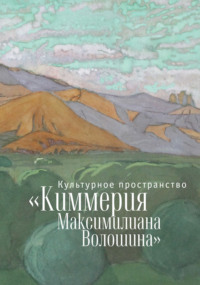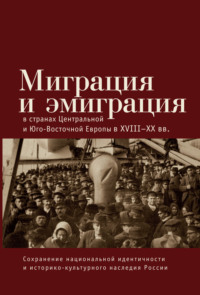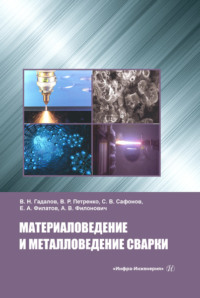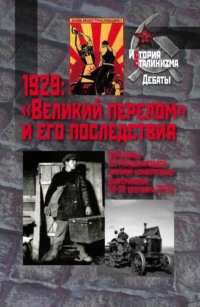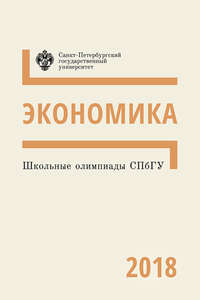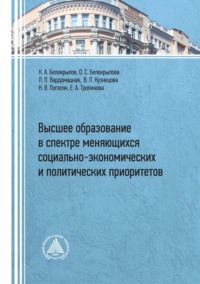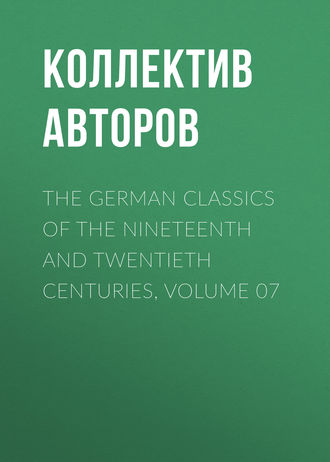 полная версия
полная версияПолная версия
The German Classics of the Nineteenth and Twentieth Centuries, Volume 07
These elements constitute, in general, the character of the primitive artistic pantheism of the Orient, which either invests even the lowest objects with absolute significance, or forces all phenomena with violence to assume the expression of its world-view. This art becomes therefore bizarre, grotesque, and without taste, or it represents the infinite substance in its abstract freedom turning away with disdain from the illusory and perishing mass of appearances. Thus the meaning can never be completely molded into the expression, and, notwithstanding all the aspiration and effort, the incongruity between the spiritual idea and the sensuous form remains insuperable. This is, then, the first form of art-symbolic art with its endless quest, its inner struggle, its sphinx-like mystery, and its sublimity.
CLASSICAL ART
In the second form of art, which we wish to designate as the classical, the double defect of symbolic art is removed. The symbolic form is imperfect, because the spiritual meaning which it seeks to convey enters into consciousness in but an abstract and vague manner, and thus the congruity between meaning and form must always remain defective and therefore abstract. This double aspect disappears in the classical type of art; in it we find the free and adequate embodiment of the spiritual idea in the form most suitable to it, and with it meaning and expression are in perfect accord. It is classical art, therefore, which first affords the creation and contemplation of the completed ideal, realizing it as a real fact in the world.
But the congruity of idea and reality in classical art must not be taken in a formal sense of the agreement of a content with its external form; otherwise every photograph of nature, every picture of a countenance, landscape, flower, scene, etc., which constitutes the aim of a representation, would, through the conformity of content and form, be at once classical. The peculiarity of classical art, on the contrary, consists in its content being itself a concrete idea, and, as such, a concrete spiritual idea, for only the spiritual is a truly essential content. For a worthy object of such a content, Nature must be consulted as to whether she contains anything to which a spiritual attribute really belongs. It must be the World-Spirit itself that invented the proper form for the concrete spiritual ideal—the subjective mind—in this case the spirit of art—has only found it, and given it natural plastic existence in accordance with free individual spirituality. The form in which the idea, as spiritual and individual, clothes itself when revealed as a temporal phenomenon, is the human form. To be sure, personification and anthropomorphism have frequently been decried as a degradation of the spiritual; but art, in so far as its task is to bring before direct contemplation the spiritual in sensuous form, must advance to such anthropomorphism, for only in its body can mind appear in an adequately sensuous fashion. The migration of souls is, in this respect, an abstract notion, and physiology should make it one of its fundamental principles that life has necessarily, in its evolution, to advance to the human shape as the only sensuous phenomenon appropriate to the mind.
The human body as portrayed by classical art is not represented in its mere physical existence, but solely as the natural and sensuous form and garb of mind; it is therefore divested of all the defects that belong to the merely sensuous and of all the finite contingencies that appertain to the phenomenal. But if the form must be thus purified in order to express the appropriate content, and, furthermore, if the conformity of meaning and expression is to be complete, the content which is the spiritual idea must be perfectly capable of being expressed through the bodily form of man, without projecting into another sphere beyond the physical and sensuous representation. The result is that Spirit is characterized as a particular form of mind, namely, as human mind, and not as simply absolute and eternal; but the absolute and eternal Spirit must be able to reveal and express itself in a manner far more spiritual.
This latter point brings to light the defect of classical art, which demands its dissolution and its transition to a third and higher form, to wit, the romantic form of art.
ROMANTIC ART
The romantic form of art destroys the unity of the spiritual idea and its sensuous form, and goes back, though on a higher level, to the difference and opposition of the two, which symbolic art left unreconciled. The classical form of art attained, indeed, the highest degree of perfection which the sensuous process of art was capable of realizing; and, if it shows any defects, the defects are those of art itself, due to the limitation of its sphere. This limitation has its root in the general attempt of art to represent in sensuous concrete form the infinite and universal Spirit, and in the attempt of the classical type of art to blend so completely spiritual and sensuous existence that the two appear in mutual conformity. But in such a fusion of the spiritual and sensuous aspects Spirit cannot be portrayed according to its true essence, for the true essence of Spirit is its infinite subjectivity; and its absolute internal meaning does not lend itself to a full and free expression in the confinement of the bodily form as its only appropriate existence.
Now, romantic art dissolves the inseparable unity which is the ideal of the classical type, because it has won a content which goes beyond the classical form of art and its mode of expression. This content—if familiar ideas may be recalled—coincides with what Christianity declares to be true of God as Spirit, in distinction to the Greek belief in gods which constitutes the essential and appropriate subject for classical art. The concrete content of Hellenic art implies the unity of the human and divine nature, a unity which, just because it is merely implied and immediate, permits of a representation in an immediately visible and sensuous mold. The Greek god is the object of naïve contemplation and sensuous imagination; his shape is, therefore, the bodily shape of man; the circle of his power and his essence is individual and confined. To man the Greek god appears as a being and a power with whom he may feel a kinship and unity, but this kinship and unity, are not reflected upon or raised into definite knowledge. The higher stage is the knowledge of this unconscious unity, which underlies the classical form of art and which it has rendered capable of complete plastic embodiment. The elevation of what is unconscious and implied into self-conscious knowledge brings about an enormous difference; it is the infinite difference which, for example, separates man from the animal. Man is an animal, but, even in his animal functions, does not rest satisfied with the potential and the unconscious as the animal does, but becomes conscious of them, reflects upon them, and raises them—as, for instance, the process of digestion—into self-conscious science. And it is thus that man breaks through the boundary of his merely immediate and unconscious existence, so that, just because he knows himself to be animal, he ceases in virtue of such knowledge to be animal, and, through such self-knowledge only, can characterize himself as mind or spirit.
If in the manner just described the unity of the human and divine nature is raised from an immediate to a conscious, unity, the true mold for the reality of this content is no longer the sensuous, immediate existence of the spiritual, the bodily frame of man, but self-consciousness and internal contemplation. For this reason Christianity, in depicting God as Spirit—not as particularized individual mind, but as absolute and universal Spirit—retires from the sensuousness of imagination into the sphere of inner being, and makes this, and not the bodily form, the material and mold of its content; and thus the unity of the human and divine nature is a conscious unity, capable of realization only by spiritual knowledge. The new content, won by this unity, is not dependent upon sensuous representation; it is now exempt from such immediate existence. In this way, however, romantic art becomes art which transcends itself, carrying on this process of self-transcendence within its own artistic sphere and artistic form.
Briefly stated, the essence of romantic art consists in the artistic object being the free, concrete, spiritual idea itself, which is revealed in its spirituality to the inner, and not the outer, eye. In conformity with such a content, art can, in a sense, not work for sensuous perception, but must aim at the inner mood, which completely fuses with its object, at the most subjective inner shrine, at the heart, the feeling, which, as spiritual feeling, longs for freedom within itself and seeks and finds reconciliation only within the inner recesses of the spirit. This inner world is the content of romantic art, and as such an inner life, or as its reflection, it must seek embodiment. The inner life thus triumphs over the outer world—indeed, so triumphs over it that the outer world itself is made to proclaim its victory, through which the sensuous appearance sinks into worthlessness.
On the other hand, the romantic type of art, like every other, needs an external mode of expression. But the spiritual has now retired from the outer mode into itself, and the sensuous externality of form assumes again, as it did in symbolic art, an insignificant and transient character. The subjective, finite mind and will, the peculiarity and caprice of the individual, of character, action, or of incident and plot, assume likewise the character they had in symbolic art. The external side of things is surrendered to accident and committed to the excesses of the imagination, whose caprice now mirrors existence as it is, now chooses to distort the objects of the outer world into a bizarre and grotesque medley, for the external form no longer possesses a meaning and significance, as in classical art, on its own account and for it own sake. Feeling is now everything. It finds its artistic reflection, not in the world of external things and their forms, but in its own expression; and in every incident and accident of life, in every misfortune, grief, and even crime, feeling preserves or regains its healing power of reconciliation.
Hence, the indifference, incongruity, and antagonism of spiritual idea and sensuous form, the characteristics of symbolic art, reappear in the romantic type, but with this essential difference. In the romantic realm, the spiritual idea, to whose defectiveness was due the defective forms of symbolic art, now reveals itself in its perfection within mind and feeling. It is by virtue of the higher perfection of the idea that it shuns any adequate union with an external form, since it can seek and attain its true reality and expression best within itself.
This, in general terms, is the character of the symbolic, classical, and romantic forms of art, which stand for the three relations of the spiritual idea to its expression in the realm of art. They consist in the aspiration after, and the attainment and transcendence of, the ideal as the true idea of beauty.
THE PARTICULAR ARTS
But, now, there inhere in the idea of beauty different modifications which art translates into sensuous forms. And we find a fundamental principle by which the several particular arts may be arranged and defined—that is, the species of art contain in themselves the same essential differences which we have found in the three general types of art. External objectivity, moreover, into which these types are molded by means of a sensuous and particular material, renders them independent and separate means of realizing different artistic functions, as far as each type finds its definite character in some one definite external material whose mode of portrayal determines its adequate realization. Furthermore, the general types of art correspond to the several particular arts, so that they (the particular arts) belong each of them specifically to one of the general types of art. It is these particular arts which give adequate and artistic external being to the general types.
ARCHITECTURE
The first of the particular arts with which, according to their fundamental principle, we have to begin, is architecture. Its task consists in so shaping external inorganic nature that it becomes homogeneous with mind, as an artistic outer world. The material of architecture is matter itself in its immediate externality as a heavy mass subject to mechanical laws, and its forms remain the forms of inorganic nature, but are merely arranged and ordered in accordance with the abstract rules of the understanding, the rules of symmetry. But in such material and in such forms the ideal as concrete spirituality cannot be realized; the reality which is represented in them remains, therefore, alien to the spiritual idea, as something external which it has not penetrated or with which it has but a remote and abstract relation. Hence the fundamental type of architecture is the symbolical form of art. For it is architecture that paves the way, as it were, for the adequate realization of the God, toiling and wrestling in his service with external nature, and seeking to extricate it from the chaos of finitude and the abortiveness of chance. By this means it levels a space for the God, frames his external surroundings, and builds him his temple as the place for inner contemplation and for reflection upon the eternal objects of the spirit. It raises an inclosure around those gathered together, as a defense against the threatening of the wind, against rain, the thunder-storm, and wild beasts, and reveals the will to gather together, though externally, yet in accordance with the artistic form. A meaning such as this, the art of architecture is able to mold into its material and its forms with more or less success, according as the determinate nature of the content which it seeks to embody is more significant or more trivial, more concrete or more abstract, more deeply rooted within its inner being or more dim and superficial. Indeed, it may even advance so far as to endeavor to create for such meaning an adequate artistic expression with its material and forms, but in such an attempt it has already overstepped the bounds of its own sphere, and inclines towards sculpture, the higher phase of art. For the limit of architecture lies precisely in this, that it refers to the spiritual as an internal essence in contrast with the external forms of its art, and thus whatever spirit and soul are possessed it must point to as something other than itself.
SCULPTURE
Architecture, however, has purified the inorganic external world, has given it symmetric order, has impressed upon it the seal of mind, and the temple of the God, the house of his community, stands ready. Into this temple now enters the God himself. The lightning-flash of individuality strikes the inert mass, permeates it, and a form no longer merely symmetrical, but infinite and spiritual, concentrates and molds its adequate bodily shape. This is the task of sculpture. Inasmuch as in it the inner spiritual element, which architecture can no more than hint at, completely abides with the sensuous form and its external matter, and as both sides are so merged into each other that neither predominates, sculpture has the classical form of art as its fundamental type. In fact, the sensuous realm itself can command no expression which could not be that of the spiritual sphere, just as, conversely, no spiritual content can attain perfect plasticity in sculpture which is incapable of being adequately presented to perception in bodily form. It is sculpture which arrests for our vision the spirit in its bodily frame, in immediate unity with it, and in an attitude of peace and repose; and the form in turn is animated by the content of spiritual individuality. Therefore the external sensuous matter is here not wrought, either according to its mechanical quality alone, as heavy mass, nor in forms peculiar to inorganic nature, nor as indifferent to color, etc., but in ideal forms of the human shape, and in the whole of the spatial dimensions. In this last respect sculpture should be credited with having first revealed the inner and spiritual essence in its eternal repose and essential self-possession. To such repose and unity with itself corresponds only that external element which itself persists in unity and repose. Such an element is the form taken in its abstract spatiality. The spirit which sculpture represents is that which is solid in itself, not variously broken up in the play of contingencies and passions; nor does its external form admit of the portrayal of such a manifold play, but it holds to this one side only, to the abstraction of space in the totality of its dimensions.
THE DEVELOPMENT OF THE ROMANTIC ARTS
After architecture has built the temple and the hand of sculpture has placed inside it the statue of the God, then this sensuously visible God faces in the spacious halls of his house the community. The community is the spiritual, self-reflecting element in this sensuous realm, it is the animating subjectivity and inner life. A new principle of art begins with it. Both the content of art and the medium which embodies it in outward form now demand particularization, individualization, and the subjective mode of expressing these. The solid unity which the God possesses in sculpture breaks up into the plurality of inner individual lives, whose unity is not sensuous, but essentially ideal.
And now God comes to assume the aspect which makes him truly spiritual. As a hither-and-thither, as an alternation between the unity within himself and his realization in subjective knowledge and individual consciousness, as well as in the common and unified life of the many individuals, he is genuinely Spirit—the Spirit in his community. In his community God is released from the abstractness of a mysterious self-identity, as well as from the naïve imprisonment in a bodily shape, in which he is represented by sculpture. Here he is exalted into spirituality, subjectivity, and knowledge. For this reason the higher content of art is now this spirituality in its absolute form. But since what chiefly reveals itself in this stage is not the serene repose of God in himself, but rather his appearance, his being, and his manifestation to others, the objects of artistic representation are now the most varied subjective expressions of life and activity for their own sake, as human passions, deeds, events, and, in general, the wide range of human feeling, will, and resignation. In accordance with this content, the sensuous element must differentiate and show itself adequate to the expression of subjective feeling. Such different media are furnished by color, by the musical sound, and finally by the sound as the mere indication of inner intuitions and ideas; and thus as different forms of realizing the spiritual content of art by means of these media we obtain painting, music, and poetry. The sensuous media employed in these arts being individualized and in their essence recognized as ideal, they correspond most effectively to the spiritual content of art, and the union between spiritual meaning and sensuous expression develops, therefore, into greater intimacy than was possible in the case of architecture and sculpture. This intimate unity, however, is due wholly to the subjective side.
Leaving, then, the symbolic spirit of architecture and the classical ideal of sculpture behind, these new arts in which form and content are raised to an ideal level borrow their type from the romantic form of art, whose mode of expression they are most eminently fitted to voice. They form, however, a totality of arts, because the romantic type is the most concrete in itself.
PAINTING
The first art in this totality, which is akin to sculpture, is painting. The material which it uses for its content and for the sensuous expression of that content is visibility as such, in so far as it is individualized, viz., specified as color. To be sure, the media employed in architecture and sculpture are also visible and colored, but they are not, as in painting, visibility as such, not the simple light which contrasts itself with darkness and in combination with it becomes color. This visibility as a subjective and ideal attribute, requires neither, like architecture, the abstract mechanical form of mass which we find in heavy matter, nor, like sculpture, the three dimensions of sensuous space, even though in concentrated and organic plasticity, but the visibility which appertains to painting has its differences on a more ideal level, in the particular kinds of color; and thus painting frees art from the sensuous completeness in space peculiar to material things only, by confining itself to a plane surface.
On the other hand, the content also gains in varied particularization. Whatever can find room in the human heart, as emotion, idea, and purpose, whatever it is able to frame into a deed, all this variety of material can constitute the many-colored content of painting. The whole range of particular existence, from the highest aspirations of the mind down to the most isolated objects of nature, can obtain a place in this art. For even finite nature, in its particular scenes and aspects, can here appear, if only some allusion to a spiritual element makes it akin to thought and feeling.
MUSIC
The second art in which the romantic form finds realization, on still a higher level than in painting, is music. Its material, though still sensuous, advances to a deeper subjectivity and greater specification. The idealization of the sensuous, music brings about by negating space. In music the indifferent extension of space whose appearance painting admits and consciously imitates is concentrated and idealized into a single point. But in the form of a motion and tremor of the material body within itself, this single point becomes a concrete and active process within the idealization of matter. Such an incipient ideality of matter which no longer appears under the spatial form, but as temporal ideality, is sound the sensuous acknowledged as ideal, whose abstract visibility is transformed into audibility. Sound, as it were, exempts the ideal from its absorption in matter.
This earliest animation and inspiration of matter furnishes the medium for the inner and intimate life of the spirit, as yet on an indefinite level; it is through the tones of music that the heart pours out its whole scale of feelings and passions. Thus as sculpture constitutes the central point between architecture and the arts of romantic subjectivity, so music forms the centre of the romantic arts, and represents the point of transition between abstract spatial sensuousness, which belongs to painting, and the abstract spirituality of poetry. Within itself music has, like architecture, an abstract quantitative relation, as a contrast to its inward and emotional quality; it also has as its basis a permanent law to which the tones with their combinations and successions must conform.
POETRY
For the third and most spiritual expression of the romantic form of art, we must look to poetry. Its characteristic peculiarity lies in the power with which it subjugates to the mind and to its ideas the sensuous element from which music and painting began to set art free. For sound, the one external medium of which poetry avails itself, is in it no longer a feeling of the tone itself, but is a sign which is, by itself, meaningless. This sign, moreover, is a sign of an idea which has become concrete, and not merely of indefinite feeling and of its nuances and grades. By this means the tone becomes the word, an articulate voice, whose function it is to indicate thoughts and ideas. The negative point to which music had advanced now reveals itself in poetry as the completely concrete point, as the spirit or the self-consciousness of the individual, which spontaneously unites the infinite space of its ideas with the time-element of sound. But this sensuous element which, in music, was still in immediate union with inner feelings and moods, is, in poetry, divorced from the content of consciousness, for in poetry the mind determines this content on its own account and for the sake of its ideas, and while it employs sound to express them, yet sound itself is reduced to a symbol with out value or meaning. From this point of view sound may just as well be considered a mere letter, for the audible, like the visible, is now relegated to a mere suggestion of mind. Thus the genuine mode of poetic representation is the inner perception and the poetic imagination itself. And since all types of art share in this mode, poetry runs through them all, and develops itself independently in each. Poetry, then, is the universal art of the spirit which has attained inner freedom, and which does not depend for its realization upon external sensuous matter, but expatiates only in the inner space and inner time of the ideas and feelings. But just in this, its highest phase, art oversteps the bounds of its own sphere by abandoning the harmoniously sensuous mode of portraying the spirit and by passing from the poetry of imagination into the prose of thought.




